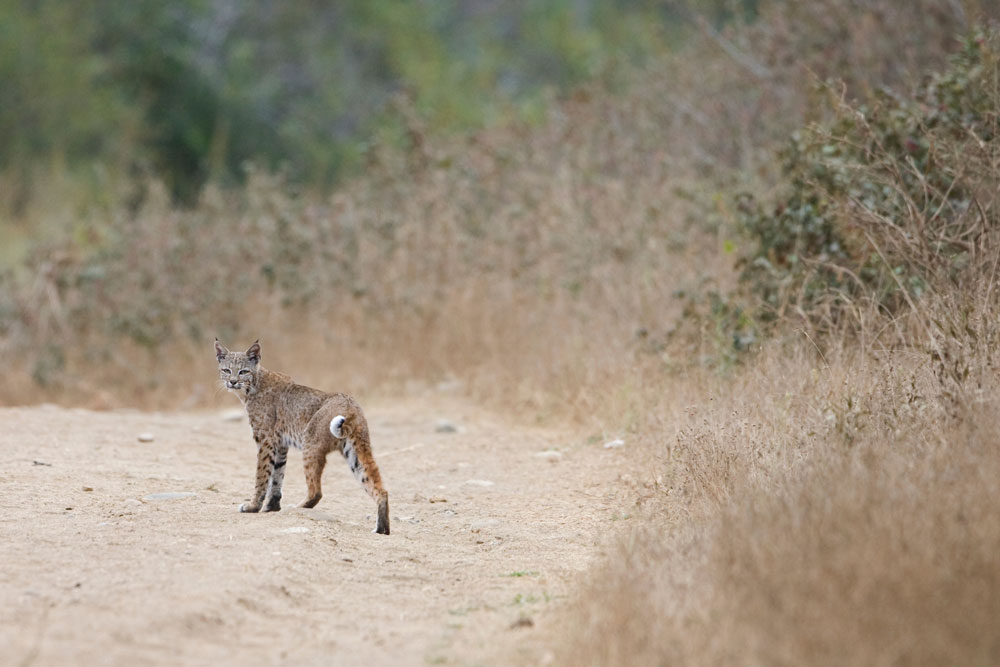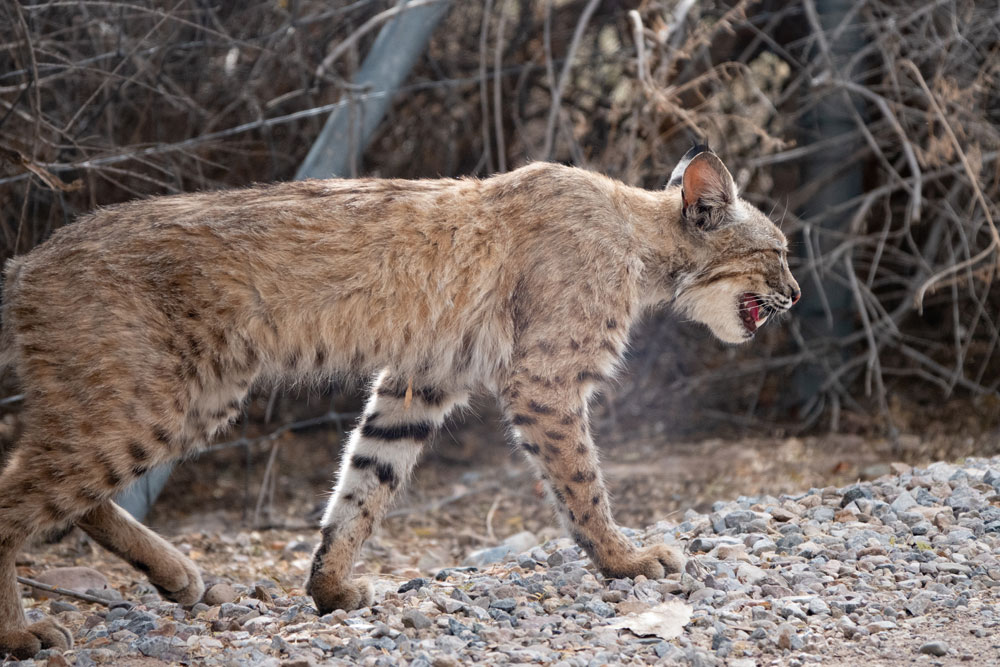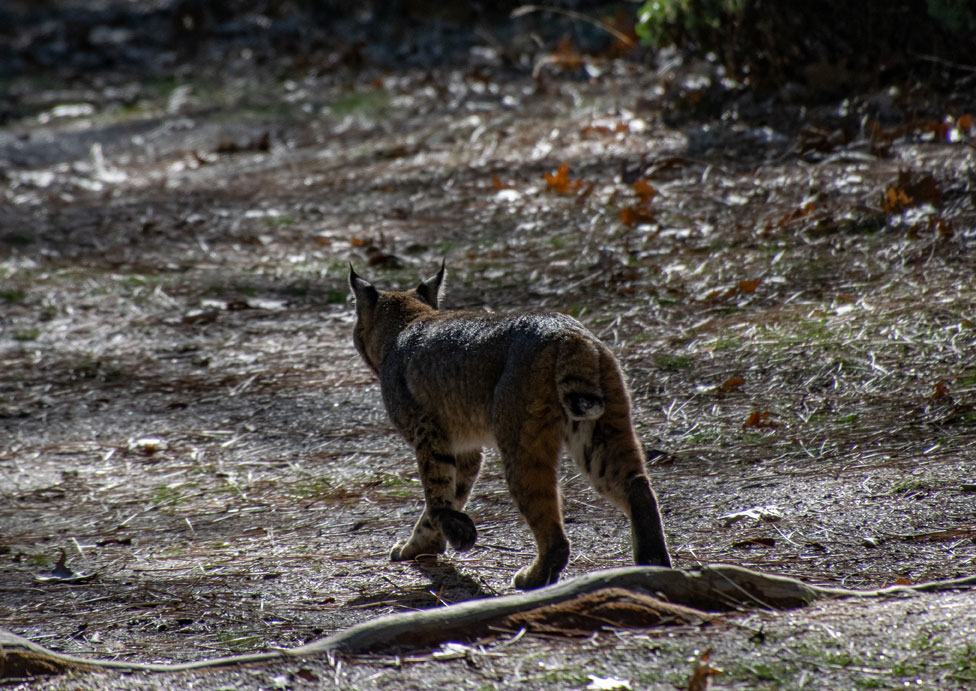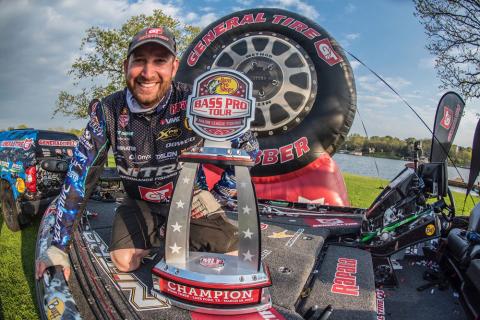Learning how to spot and track a bobcat is key to your success in hunting these wily solitary creatures. With honed senses and excellent camouflage, bobcats are hard to spot and even harder to track.
However, if you know a little about where bobcats like to sleep, what they do and where they go when they’re active, what they like to eat and what their tracks look like, you stand an excellent chance of bagging one this hunting season.

Bobcat Physical Features
You’re not likely to spot a bobcat unless you go out and look for one specifically. These elusive felines are hard to pin down. One of the reasons for this is because they aren’t very large, more like the size of a cocker spaniel.
The Lynx rufus is the most diminutive cousin of the Lynx family and can range from eight to 33 lbs. Not counting their bobbed tail, they usually measure 25” to 42” long, with the males of the species larger than the females (their tracks are larger, too).
Along with its diminutive size, you can recognize a bobcat by its bobbed tail, which usually measures 4.3” to 7.5” relative to the size of its body. Bobcats found in colder climates to the north often are larger than their cousins that live south.
Bobcats usually sport brown and gray on top with a dappling of black spots, and the colors generally fade toward their white belly. They have pointed ears with black tufts and a patch of white fur in the middle of the ear. Their coloring is perfect for blending into a dappled forest or sagebrush, common to their habitat.
Bobcat Dens and Habitats
These solo cats have an extensive range and multiple dens within their territory, and they keep other cats out by marking the perimeters with urine, feces and scent. They have one main den, called the natal den, and various smaller dens across their range. Most of the time, you can find bobcats in abandoned beaver lodges, fallen trees, caves or burrows.
This main den is substantial enough for a mother cat to have her litter of kittens, usually one to six kittens per litter. The auxiliary shelters are used to hold kittens near hunting grounds so that the mother cat can keep an eye on her young when she’s hunting.
Bobcats are the most prevalent wild cat in North America and can exist in woodlands, semi-deserts and swampy areas.

Bobcat Prey and Hunting Techniques
Although there are tales about a bobcat taking down a deer, usually, these predators go after smaller fare. If they go for something bigger, it often means they want an extended meal and will keep returning to the big kill day after day until it’s eaten.
The usual fare for the bobcat is mostly rabbit, with a smattering of rodents and other small creatures. Contrary to popular belief, bobcats rarely go after domesticated animals like cats and dogs, but will sometimes take advantage of penned farm animals like chickens.
When walking, bobcats have a diagonal gait, like dogs, deer, moose, elk and coyote. This means that when they place their hind foot, then the next foot they place is the forepaw on the opposite side.
When hunting, they can get up to speeds of 30 mph, which is uncommonly fast (they have to be when running after swift rabbits), but they can only maintain high rates in short bursts. They also have a different gait when they’re running down prey. They put their hind paws in the prints of their forepaws, similarly to how rabbits run, which gives both animals an oddly bobbing gait.
No matter if they’re walking or running, you can easily spot a bobcat by its tracks. In the snow, the mud or in dew, when you’re after these shadowy felines, you need to be alert and observant.
Bobcat Tracks
As for diagonal walkers, bobcats are so precise that they put each back paw into the impression made by the front foot. It almost looks like you’re tracking a biped instead of a quadruped.
Bobcats have asymmetrical prints, with four toes and a metacarpal pad that’s shaped vaguely like an “m.” As with most felines, bobcats keep their claws retracted when they walk so that you won’t see them in their tracks. Their front paws are larger and more rounded than the rear ones, 1.5” to 2.5” long and wide. Their back paws are oval-shaped and slightly smaller than the front paws.
Some hunters can get confused trying to identify housecats, bobcats and mountain lions. If you’re stymied about which felines made the tracks you’re looking at, remember the 1-2-3 rule. House cats usually measure 1” across, bobcats span 2” and mountain lion tracks are 3” across.
If you’re an expert, you can also tell if the feline is male or female. The male bobcat has larger tracks, a rounder heel pad and more robust toes. There isn’t a lot of negative space between the toes and the heel pad. On the other hand, female cats have narrowed heel pads and the toes are smaller and narrower. There’s a lot more negative space between heel pad and toes in a female’s tracks.
Bobcat Tracking Tips

Bobcats are generally solitary and crepuscular, which means they hunt mainly at dawn and dusk. Sometimes, they extend their hours if their prey is becoming more active later in the morning.
Two types of signs that are useful in tracking a bobcat are scrapes and hunting spots. Scrapes are 3.5” to 7.5” long and have traces of bobcat urine and feces in them as warnings to other predators to stay away. Along with the best bobcat traps and the best tracking dogs, you need to know what to look for to get an edge on these wily predators.
When bobcats are hunting prey, they usually spend many minutes completely still in a crouched position. You sometimes can come across prints and see the marcation of haunches and a bobbed tail in the snow or dust. Look for tracks and these other telltale signs that a bobcat is in the area.
Wrapping Up
Tracking bobcats is a challenging endeavor. These felines are smart, suspicious and silent. Look for the tracks of a diagonal walker with retracted claws and the occasional bobcat scrape to ensure you’re on the right trail.
To be the best hunter you can be, you need to have high-quality gear. Mossy Oak can outfit you with hunter-approved gear that won’t let you down when you’re about to make a killing shot.



























